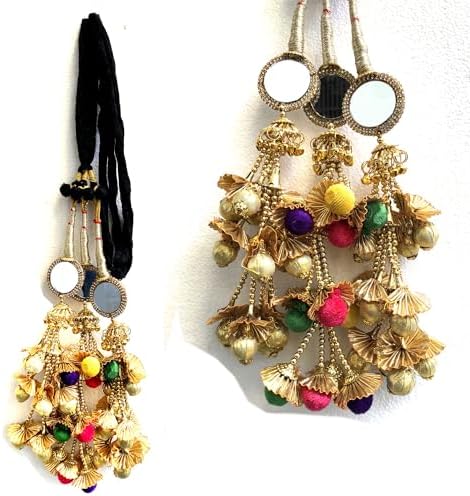In the vibrant world of Punjabi culture, jewellery and accessories are not just ornamental; they are expressions of tradition, identity, and celebration. Among the many distinctive adornments, the Parandi holds a special place, especially in women’s hairstyling. This traditional hair accessory adds color, elegance, and cultural richness to any outfit. Let’s explore the origins, styles, and significance of Parandi in Punjabi culture.
What is a Parandi?
A Parandi is a decorative hair accessory made of colorful threads and tassels, traditionally worn by Punjabi women tied at the end of a braided hairstyle. The accessory is designed to enhance the beauty of long hair, especially during festivals, weddings, and cultural performances.

Parandis come in a variety of vibrant colors like red, green, yellow, and blue, often intertwined with golden or silver threads to add a shimmering effect. They are lightweight and flexible, making them comfortable for prolonged wear.
Cultural Significance of Parandi
The Parandi is much more than a mere fashion accessory—it carries deep cultural symbolism. In Punjab, long hair is often associated with femininity and grace, and adorning braids with Parandi signifies pride in one’s heritage and beauty.
Parandi is commonly worn during festive occasions such as Baisakhi, Lohri, and weddings. Punjabi folk dancers, especially in Bhangra and Giddha performances, wear Parandis to add vibrancy and motion to their movements. The fluttering tassels of the Parandi beautifully complement the energetic dance steps, enhancing the visual appeal.
Moreover, Parandi is sometimes considered a token of love and affection, gifted by loved ones to brides or young girls as a symbol of good wishes.
Styles and Types of Parandi
Parandis are available in various styles to suit different occasions and preferences:
- Classic Thread Parandi: Made from colorful cotton or silk threads braided into tassels, often with golden or silver highlights.
- Beaded Parandi: Decorated with small beads, pearls, or sequins for added sparkle and texture.
- Embroidered Parandi: Featuring intricate embroidery or mirror work to create a rich, festive look.
- Modern Parandi: Contemporary versions may incorporate artificial flowers, crystals, or tassels in unique shapes and colors, appealing to younger generations.
How to Wear and Style Parandi?
Wearing a Parandi is simple yet impactful. After braiding your hair, tie the Parandi at the end of the braid, allowing the tassels to hang freely. For an elegant look, coordinate the Parandi color with your outfit or jewellery.
Parandi pairs perfectly with traditional Punjabi attire like salwar kameez, lehengas, or Punjabi suits. It’s also a favourite among brides who want to incorporate authentic cultural elements into their wedding ensemble.
Conclusion
Parandi is a beautiful and meaningful accessory that continues to hold a cherished place in Punjabi culture. Whether worn during festivals, weddings, or dance performances, it symbolizes tradition, joy, and femininity. Adding a Parandi to your hairstyle is a wonderful way to celebrate Punjabi heritage and add a splash of color and elegance to any look.